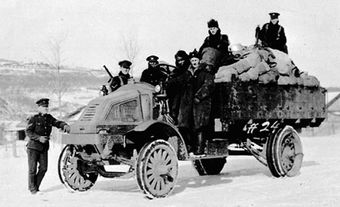Garrison Towns
Garrison towns, places where troops are stationed, usually for defence but sometimes for prestige reasons, as in CAPITAL CITIES, where they form part of the governor's entourage. The first garrison towns were Placentia and St John's (Nfld), Port-Royal and Canso (NS), and Québec City. By the 18th century, LOUISBOURG, Halifax and Montréal were added to the number. Small bodies of troops periodically garrisoned lesser centres such as Saint John. In some cases a town grew up around a fort or barracks, and troops continued to be posted there even after the fortifications had sunk into ruin. Montréal and Kingston were in this category by 1870 when imperial garrisons were withdrawn from Canada, leaving only Halifax and Esquimalt with small contingents.In 1662 Placentia had a garrison of 25 French soldiers. Its growing importance as the centre of the French fishing fleet meant an increase of its garrison to about 150 by 1704. It was fear of this garrison town that provoked the first British garrison at St John's in 1696. Troops and fishermen from Placentia formed the nucleus of the first garrison and townsmen of Louisbourg in 1713. By then Québec City had become the predominant garrison town in Canada, following the arrival of some 1100 troops of the CARIGNAN-SALIÈRES REGIMENT in 1665. Their successors at Québec City were the TROUPES DE LA MARINE, who also served in Acadia. The growth of Louisbourg as a garrison town both within and without the fortress eventually led to the founding of Halifax as a counterpoise British garrison town in 1749.
The major British garrison towns that emerged after 1760 and multiplied after the AMERICAN REVOLUTION were Québec City, Montréal, Kingston, Niagara, York, London and Amherstburg. Together with St John's, Halifax and Fredericton, they usually had about 7000 troops, their number kept roughly equal to the standing peacetime army of the US, perceived as Canada's potential enemy until 1871.
Not only did the garrison towns attract farmers, merchants and professionals to service the garrison, but imperial troops left their mark upon such towns. There was the welcome largesse of the military chests which sometimes even surpassed the provincial government's annual revenue. This military outlay went for food, fuel, fortifications, canal building, drink and other amenities for the troops. There was also the myriad activities of the officers and men in cultural, religious and fraternal relations with townsmen. In Montréal, for instance, it was soldiers of the garrison who introduced rowing on the St Lawrence. They encouraged fencing, curling, cricket, hockey and the steeplechase. They patronized Masonic and Orange lodges, built the first Presbyterian and Anglican churches in the city, and helped develop the early Montréal police force.

 Share on Facebook
Share on Facebook Share on X
Share on X Share by Email
Share by Email Share on Google Classroom
Share on Google Classroom


